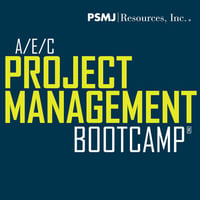
If we had to sum up the most critical aspects of an architecture/engineering project closeout, it would look something like this:
1. The key to success is to use checklists — lots of checklists. When planning the other phases of the project, there is usually some logical sequence to completing the tasks. Most of this disappears during the final 10 percent. Your focus should now shift to crossing off items on various checklists until none remain.
2. Don’t allow anyone to work on any item that is not on the checklist. This is extremely important. People will always find something more interesting to do than close out punchlist items. These distractions waste the budget and do nothing to complete the project. Insist on frequent meetings, sometimes several times a day, to keep the focus on closeout.
3. Build your firm’s intellectual capital through “lessons learned.” At the end of each project,collect the lessons learned by the project team and work them into improving the firm’s processes. Perform the project completion analysis and document what went well and what did not. Be a learning organization — don’t repeat past mistakes.
4. Make every effort to safeguard the project records. If trying to find the back-up calculation fora certain structure is difficult when the project is in the design phase, it’s impossible five years later!Leaving all your project records in file cabinets until someone else needs the cabinets is not records management.
5. Don’t forget to ask for a referral from your client. Make sure this is a routine event at the closeout of every project. Get the referral on the client’s official letterhead, signed by the most senior manager possible. Remember, you can always say you did something, but having it in writing from your client is proof you did.
6. Plan your project completion party at the start of the project. Successful project teams start by planning for success, then they execute the plan. If the project schedule indicates the completion party as a separate milestone, the team is looking forward to success. Make sure you allocate budget to make it happen.
 Looking for more PM tips: PSMJ’s A/E/C Project Management Bootcampprovides PMs with knowledge and tools that they need to perform better, more efficiently, and with greater attention to client service.
Looking for more PM tips: PSMJ’s A/E/C Project Management Bootcampprovides PMs with knowledge and tools that they need to perform better, more efficiently, and with greater attention to client service.
For more project management tips, checkout these PSMJ blog posts:
What Are The Traits Of The Best Project Managers?
10 Things Every Project Manager Must Know



